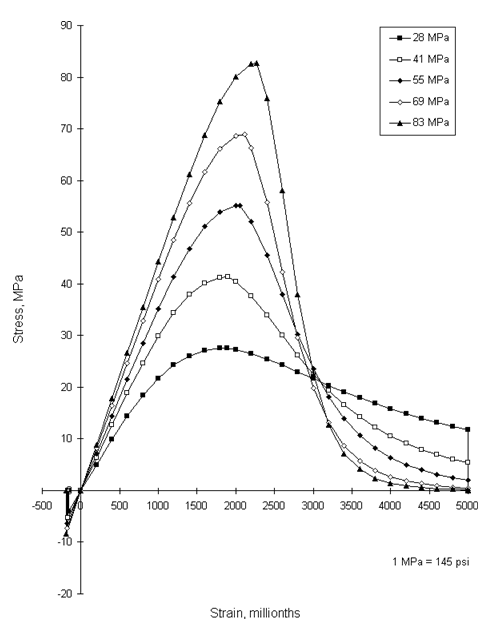I am trying to get a material model law for simulating a concrete block.
The concrete stress strain curves are shown in the attached image, of which my need is for the 55MPa curve.
Now, I am not choosing LAW36 because it deletes the element or brings the stress to zero after the element strain goes beyond the last point.
So I am choosing LAW2 which allows me to keep straining the element and fixing the stress to the max value.
But I want a law that allows me to let the stress reduce below the max value and keep constant thereafter so that the element keeps absorbing energy by continuing to strain.
Please suggest a better law or how to modify law2 to achieve this?
<?xml version="1.0" encoding="UTF-8"?>